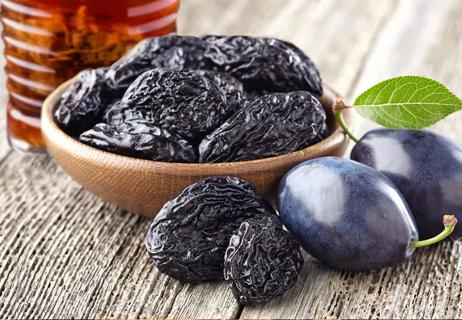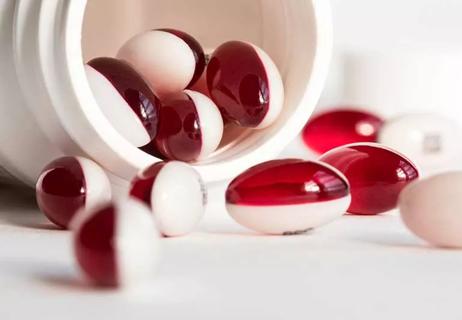Developed in the 1800s, this remedy remains a viable solution today

Glass bottles lining pharmacy shelves in the 1800s offered “fluid magnesia” options for those experiencing constipation and tummy troubles. The problem? The taste of these elixirs was not the best.
Advertisement
Cleveland Clinic is a non-profit academic medical center. Advertising on our site helps support our mission. We do not endorse non-Cleveland Clinic products or services. Policy
So, Charles H. Phillips decided to develop a more palatable option. His creation — dubbed “Milk of Magnesia” and patented in 1873 — can still be bought today.
But is a constipation remedy that nearly dates to the U.S. Civil War a good choice given advances in pharmaceutical products and medical knowledge? Let’s find out from gastroenterologist Samita Garg, MD.
As you might have guessed, “milk of magnesia” isn’t a dairy-based item. The name is a catchy marketing moniker that captures the liquid product’s milky white appearance and use of magnesium.
The technical name of “milk of magnesia” is magnesium hydroxide, or Mg(OH)2. It’s essentially a laxative.
“Constipation” is the medical term for when you just don’t poop enough. As your bowel movements become less frequent, poop lingers in your large intestine (colon) and typically becomes dry and hard.
Those rocks of stool become increasingly hard to pass, leading to a plugged-up feeling that often gets folks reaching for various over-the-counter remedies and natural solutions for constipation relief.
Which brings us to milk of magnesia. The product works to resolve constipation in two ways.
Advertisement
Or to put the process in even simpler terms: Milk of magnesia unclogs you.
Put it this way: Don’t stray too far from a restroom. Milk of magnesia can get things moving in as little as 30 minutes, notes Dr. Garg.
In general, the expected timeframe for a bowel movement is anywhere from 30 minutes to six hours after taking milk of magnesia. (It’s often recommended to take milk of magnesia before bedtime.)
Milk of magnesia is available in liquid, pill or chewable tablet form. Follow the directions on the package label for recommended dosage and age of use. (Instructions typically advise talking to a doctor before giving the product to children younger than age 6.)
Milk of magnesia usually is taken once a day. (But doses also may be divided. Just be sure not to exceed the recommended dosage within a 24-hour period.)
It’s best to follow a dose of milk of magnesia with an 8-ounce glass of water.
One more important note: Don’t take milk of magnesia for more than a week without talking to a doctor. “If it’s not helping with constipation or your symptoms get worse, it’s best to get evaluated to see if there’s something else going on,” states Dr. Garg.
Milk of magnesia is known for being pretty gentle, but some people do experience side effects. These can include:
Stop taking milk of magnesia and contact a doctor if you see blood in your stool, experience severe vomiting or are unable to have a bowel movement even after taking the laxative.
It’s best to talk to your healthcare provider before using milk of magnesia if you’re:
Aside from constipation relief, milk of magnesia also is used as an antacid to relieve heartburn, indigestion and upset stomach. (Learn more about ways you can tame heartburn in our Health Essentials Podcast.)
There’s a reason why milk of magnesia remains on store shelves 150 years after being introduced: “It has proven to be an effective way to treat mild to moderate constipation,” reaffirms Dr. Garg.
Just make sure to view milk of magnesia as a short-term treatment. If you continue to have issues with constipation, talk to a healthcare provider to find the reason why and possible solutions.
“I’m a big advocate of holistic therapies when it comes to constipation,” says Dr. Garg. “While there are supplements and over-the-counter medications that work, many times, we can address the issues causing constipation through simple lifestyle and diet changes.”
Advertisement
Learn more about our editorial process.
Advertisement

Drinking water, eating high-fiber foods and exercising are just a few of the ways to get back to your ‘regular’ self

It might be, but it’s more likely that your symptoms of constipation and back pain are caused by underlying conditions

From staying hydrated to staying on schedule, these tips can help you stay regular on-the-go

Prunes earn the title of ‘nature’s remedy’ for bowel movement issues

Stool softeners are a type of laxative that softens your stool, making it easier to poop

A dietitian weighs in on social media’s popular constipation recommendation

Eat foods high in fiber, drink water and consider using a laxative

It could be diet or it could be something else

Babies can get congested easily, but you can calm their cough by keeping them hydrated, using nasal drops and running a humidifier

Weight loss may cause loose, sagging skin and muscle loss to your rear

Several conditions, like vitiligo and fungal infection, can cause a loss of pigmentation, leading to white spots or patches on your skin